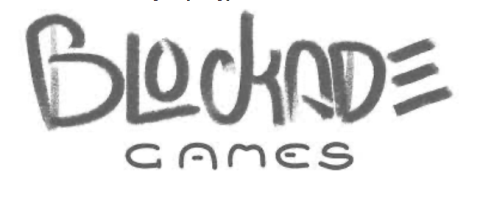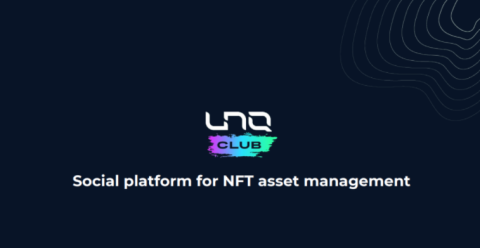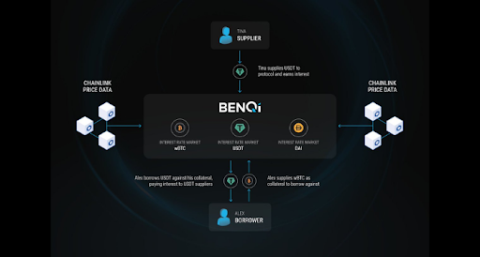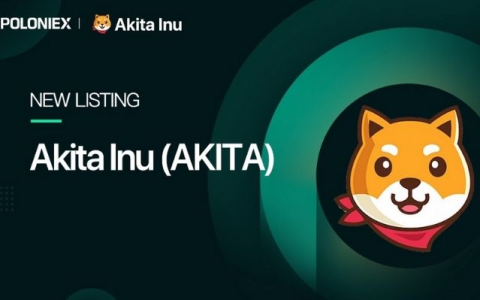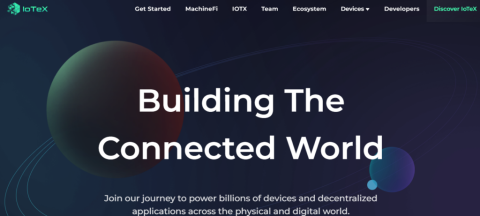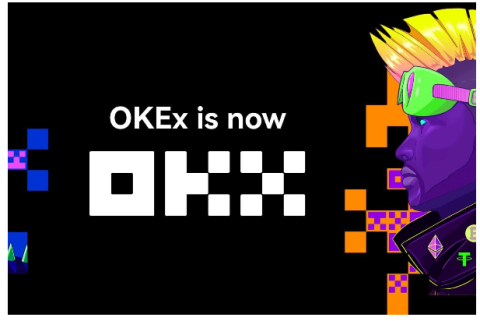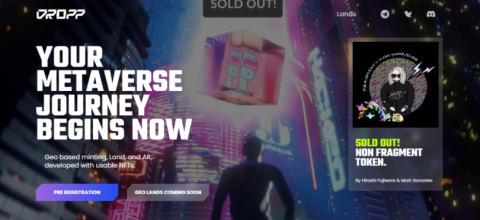What is thena? Discover the outstanding features of Thena and THE . token

Ngoài PancakeSwap, hệ sinh thái BNB Chain còn có một AMM khác có TVL đạt 150 triệu USD chỉ sau hai tháng ra mắt, dự án này được gọi là Thena.

In an effort to make blockchain more energy efficient, equitable, and decentralized, a number of new protocols use Proof of Capacity (PoC) based consensus algorithms, replacing existing mining algorithms. Overexploiting computing resources means using too much system resources for storage.
The Subspace Network development team found that the PoC consensus protocol was facing a rather distinct structural challenge, termed the “operators dilemma” (Farmer's Dilemma), this suggests that the current studies are not really compatible with the incentive mechanism for on-chain activities.
Simply put, the farmer must decide to allocate scarce storage between (1) maintaining chain history and state, or (2) maximizing the storage space they can afford. committed to providing for the consensus protocol. Usually miners will always choose the latter, it is best for their part that the system always runs smoothly, while the most risky thing is to leave the pool with only a few trusted people. .
To solve this dilemma, the company developed Subspace – a PoC blockchain. In it, miners do not need to maintain the state or history of the chain, while retaining the security attributes and decentralized benefits of a full node. Consensus in Subspace is based on a proof-of-copy archive of the main blockchain's history. Miners store collective history, many times, with each person storing as many copies as possible within their allowed storage limits.
Consensus and computation are then separated, so that miners only need to propose an order for transactions, while executing nodes maintain state and compute the switch. This separation greatly reduces the storage and computational power required to operate a mining node, even in an Ethereum-style model, allowing for a high degree of user participation in the consensus network. normal with more mainstream hardware.
Nakamoto-style blockchains, such as Bitcoin and Ethereum, combine the longest-chain fork-choice rule with a PoW (Proof of Work) mining puzzle . These systems are fundamentally secure, while still ensuring vibrant on-chain activity, with the majority of miners being highly honest. Unlike the Byzantine Fault Tolerant (BFT) consensus algorithms, users can participate in the network without permission and the scalability of the chain is very high.
These attributes are the standard that all current blockchain consensus protocols are building upon. Unfortunately, the security of PoW comes with a hefty price tag in terms of energy. All in all, miners on Bitcoin and Ethereum are currently consuming as much energy as a medium-sized country, and these numbers steadily increase as more and more capital flows into the system. This raises the important question of whether cryptocurrencies can achieve mass adoption without affecting global warming.
Furthermore, while mining was originally envisioned as a democratic and equal process, with a “one CPU one vote” rule, it quickly became a highly commercial and high concentration. Today, participation in Bitcoin mining has been replaced by “every ASIC (Bitcoin mining device) is one vote,” meaning that each miner must also have access to low-cost electricity.

Ethereum mining has an alternative approach of applying “one GPU per vote”, but also requires special hardware and still tends to be concentrated in areas with the lowest electricity prices. This raises another important question about whether existing cryptocurrencies are truly decentralized, or if we are simply replacing a trusted third party (financial institution). main) to another party (mining pool)?
These challenges have attracted diverse groups of hackers, researchers and software engineers, who are looking to design a sustainable blockchain that is true to Nakamoto's vision of a democratic and decentralized future. more focused. The most famous solution to this problem is Proof of Stake (PoS) , which uses a virtual mining system based on one's wealth, according to the rule that one coin (or token) is one vote. While PoS solves the problem of sustainability, it does not align with Nakamoto's vision. Instead, the alternative it offers now requires users to be authorized to participate, and that also represents a strong trend towards centralization.
In fact, PoS systems are magnifying the existing rich-poor disparity in cryptocurrencies, which is already significantly larger than the highest disparity in the history of fiat assets globally. rich get richer. Instead, what is needed today is a basic, resource-intensive cryptographic verification system that is already widely distributed in the market and does not require the intervention of specialized hardware.
Now to the Proof of Capacity (PoC) storage concept, which replaces mining that is abusing computing power with storage farming, with up to a single hard drive. votes. A consensus protocol that relies on hard drives seems to be a viable solution, as storage hardware has long been structured as a consumable, consumes negligible power, and exists heavily on our devices. end user. In fact, implementing PoC such that it doesn't switch back to PoW, without using a permissioned model, is not simple at all, as evidenced by the small number of chains that have survived so far. now. Furthermore, all current PoC blockchain designs fail to address a critical problem in the mechanism that we will analyze shortly.
By definition, we can see that in any PoC blockchain, a miner (farmer) is incentivized to allocate as many storage resources as possible for consensus. Whereas the opposite, wants all nodes to save storage to maintain both the current state and history of the blockchain. These contradictory requirements pose a challenge for miners: Do they conform to the desired mechanism of the system, preserving the chain's state and history, or must they find a way to maximize the share of the chain? reward themselves, by dedicating all storage capacity to the consensus protocol?
When faced with this dilemma, miners will always choose the latter, operating smoothly and efficiently, but at the same time degrading both the security and decentralization of the network. Meaning that any PoC blockchain will eventually merge into one large mining pool, at an even greater rate than PoW and PoS chains.
Remember that in any Nakamoto-style blockchain, a new consensus node must synchronize the state of a chain from the origin, to be assured that they are indeed on the longest valid chain, which implies being available at all times. have string history. If the majority of nodes store history, this data will always be available and the network can be considered decentralized. However, as time goes on and history grows, the storage burden on all nodes also increases, and some nodes may choose to truncate the history, storing only the current state of the chain instead. . This trend was evident in the Bitcoin network as early as 2014.
If full nodes do not store history, new nodes must rely on storage nodes or third-party data stores for initial synchronization, resulting in a more centralized network. In a PoC blockchain, miners gain nothing from storing history, but clearly potentially lose block rewards when performing validations. Especially as history progresses, more and more data needs to be stored on their drives.

In order to extend the longest chain and charge for valid transactions, miners must maintain the chain's mnemonic state. Since state is often too large to hold in memory, it must compete with the need to implement consensus protocol in precious hard drive traffic. While perhaps insignificant for UTXO-style low-throughput sequences, state storage makes sense for any EVM-style string or any string geared towards extending the base class.
Furthermore, all miners are also required to calculate the state transition for each new block as part of the verification process, while the computational cost is not small, contradicting the desire of the mining variable. turned into a light task. This miner's dilemma further exacerbates the verifier's dilemma, by adding to the opportunity cost of verification.
If a miner is willing to adopt a weaker security model, they can join a trusted mining pool whereby they delegate transaction verification and block proposed functions to a single operator node. execution, while miners only focus on evaluating blocks. This has the added benefit of significantly reducing the computational cost required to participate in consensus, making it ideal for many small miners who only use unused storage space on their home computers.
When a miner finds a valid solution to the block, they submit it to the pool's operator node, who will mint a new block in exchange for a share in the block creation bonus. As long as the fee is lower than the opportunity cost of internal block generation, a reasonable miner will always choose to participate in a pool. In PoW blockchains, this choice is largely dictated by the desire for a smoother reward function, since unlike joining a farming pool, joining a mining pool does not increase the total number of shares. a person's reward.
The main problem with this model is that it is not decentralized. Although the hardware used in the actual consensus protocol is highly distributed compared to existing PoW mining pools, miners are still centralized in one spot, like validators in PoS protocols. authorized or nominated. However, PoS systems that at least provide heavy penalties for wrongdoing, have worked in practice so far.
Since miners in pool models work best when it's lightweight, the reach of malicious or collusion miners is much higher than on a blockchain. particular. Assuming that the majority of operators are honest, it also means that most of the operating nodes are honest. If that assumption is incorrect, miners and most users will not be able to distinguish between valid and fraudulent transactions occurring in the longest chain, allowing miners to generate money out of nowhere. , or spend the money of operators and users with their own intentions.
The design of PoC blockchains seems to be stuck at the core of this dilemma. On the one hand, we can forgo the goal of having miners retain history, while doing everything we can to minimize the burden of state maintenance such that the opportunity cost of running a full node enough is still insignificant, so that less motivated miners can pool into a mining pool like the one above. This results in a much more restrictive structure that excludes smart contracts with full state, and even the base class scalability is minimized.
On the other hand, we can abandon Nakamoto's vision and accept pooled consensus as a necessary disadvantage, as the majority of blockchains have been implemented in PoW and PoS communities, while at least possible delighted with the fact that participation is now fair and sustainable.
In this project, TraderH4 will present a third option that breaks the miners' dilemma, without sacrificing the security or decentralization of the network, organized as follows:
To materialize, TraderH4 will demonstrate how Subspace approaches this solution in a Polkadot model of a comprehensive programmable account-based blockchain that periodically commits the state of all accounts in the block header. , although we believe that many of the techniques proposed by this project can be generally applied to any Nakamoto-style blockchain.
Subspace Network is a Polkadot-focused product built by Subspace Labs (based in the San Francisco Bay Area, Silicon Valley, and the West Coast). The research-based project initiative originally funded by the US National Science Foundation in 2018, is currently being built using the Substrate framework. Subspace is made up of a global development team that includes protocol hackers, blockchain developers, and software engineers. Their goal is to address systemic challenges in the blockchain space regarding sustainability, scalability, and fairness so that the crypto industry can return to its decentralized roots. .
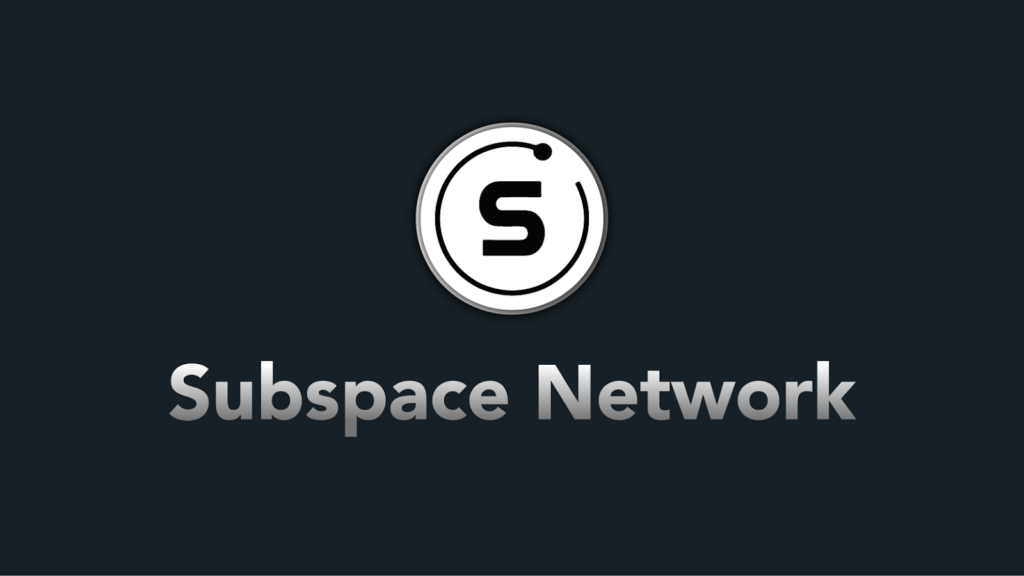
Subspace is the first PoC blockchain to solve the miners' dilemma, a set of complex design challenges of mechanisms that show that current PoC blockchains are not really compatible with generation. motivation to join the network for users.
The miners' dilemma dictates that, in any PoC blockchain, a consensus node must choose between maintaining blockchain state and history or maximizing the amount of space it commits to. binding for the consensus protocol. In other words, unlike PoW and PoS networks, PoC networks do not have strong financial incentives for users to operate a full node, leading to a more centralized situation.
In the Polkadot ecosystem, Subspace solves 03 important problems:
Proof of Capacity (PoC) is the leading alternative to Proof of Work (PoW) and Proof of Stake (PoS) based consensus protocols. In a PoC blockchain, abusive mining of computing power is replaced by intensive farming that uses storage (hard drives). The main benefit is energy-saving mining (environmentally friendly and sustainable), while keeping the same security characteristics as PoW than PoS. Mining is also ASIC-resistant, allowing ordinary users to participate in consensus with mainstream hardware, although this is heavily dependent on the underlying proof-of-stake implementation.
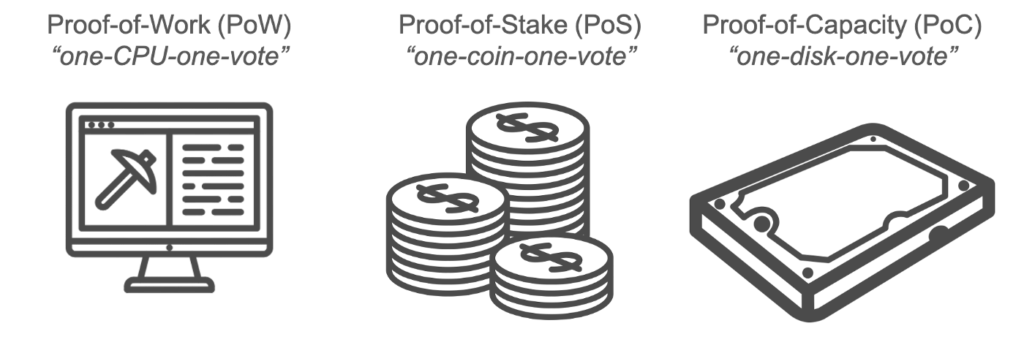
By using Substrate, Subspace will be a parachain on Polkadot. Substrate supports consensus protocols that can be easily integrated and offers several currently popular algorithms: Proof of Stake, Proof of Authority, and proof of work. (Proof of Work). Thanks to the W3F Grants grant, the Subspace project was able to expand the above list to support more Proof of Capacity. To achieve this goal, Subspace has developed a set of Substrate modules, which support the PoC consensus protocol. These modules are designed to act as a middleware layer between the underlying PoC and the Substrate Pallet, overarching defining on-chain-specific logic.
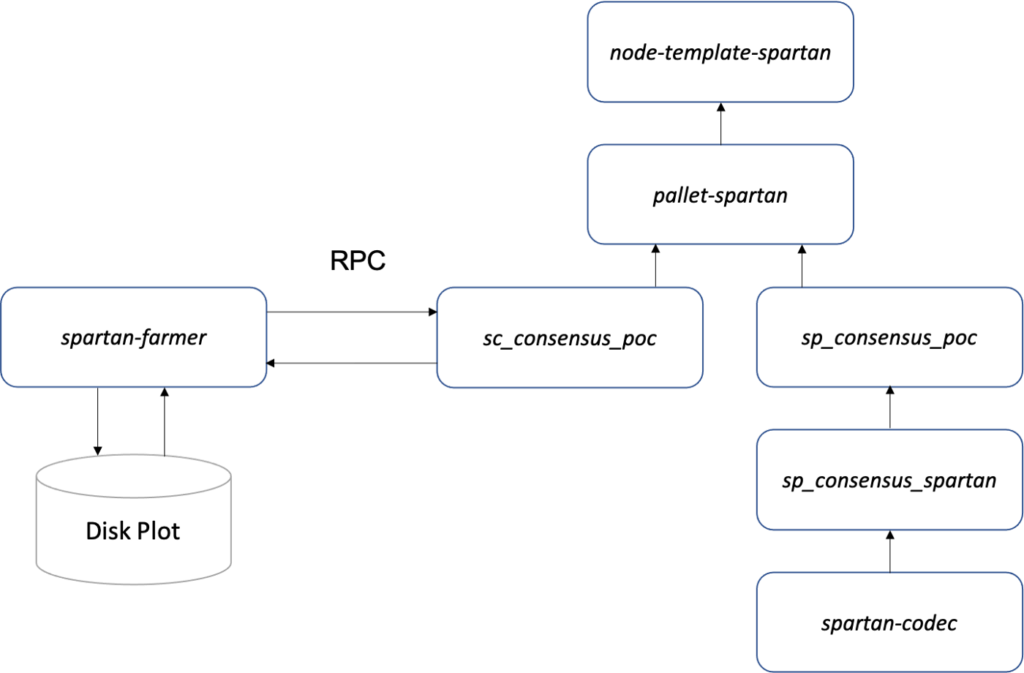
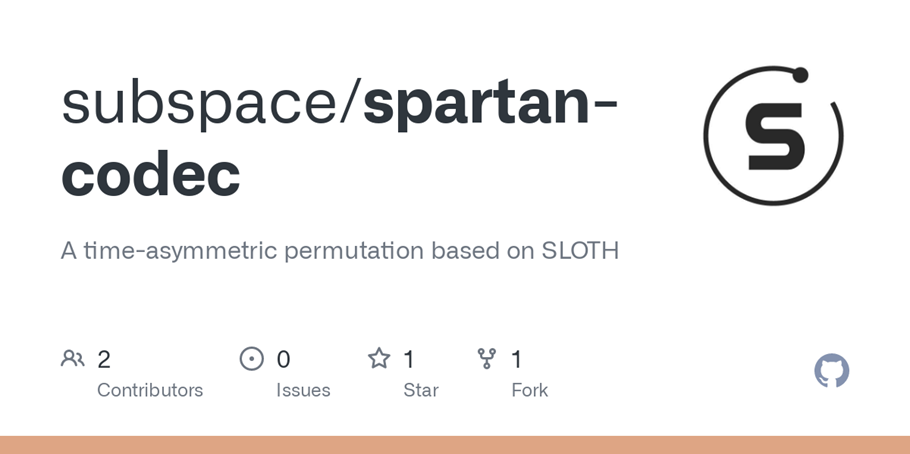
Recently, Subspace has offered Spartan V3 focused on security analysts, here are some assumptions:
Subspace Labs Inc
Subspace Labs is a decentralized company specializing in the research and development of the Subspace Network project. While based in Palo Alto, California, USA, they are a global, remote development team with an initial lineup of protocol hackers and crypto enthusiasts.
The Subspace project started a few years ago with the idea of a Layer 2 network, suitable for building decentralized applications at scale. During the implementation, the team realized that the fundamental problem in the crypto space lies in designing a layer that is fair and sustainable, while remaining secure and decentralized. Through surveying many other projects, the development team felt that all existing and proposed solutions were inadequate. They've spent the past few years doing research, designing and developing a new protocol from scratch that aligns with these ideals.
Subspace Network is a Layer 0 protocol that is fully interoperable with any layer, allowing it to serve as an infrastructure layer for the entire Web 3.0 ecosystem. Based on years of research and development, Subspace is the first protocol that truly solves the three blockchain dilemmas, providing an open and scalable platform for both storage and computation. Subspace is currently supporting Polkadot, Kusama and more networks in the near future.
Development team
The two co-founders of the Subspace Network project are Jeremiah Wagstaff and Nazar Mokrynskyi.

Jeremiah Wagstaff , a native of Palo Alto, California, United States, is a military veteran with more than eight years of service in the Texas National Guard. Before entering the army, he successfully defended his doctorate of science in 2006
Jeremiah Wagstaff started working at Subspace Labs from April 2018 until now, as a co-founder and CEO. Previously, he also founded and ran Omni Builds, Board Game Island and 3rdeye MobileVision.
He was also one of the veteran hackers in the field of breaking into protocols. Jeremiah is also a talented and patient entrepreneur with a remarkable blend of business and technological intelligence. His work over the years helps empower users to take ownership of their data so they can become themselves producers and consumers of peer-to-peer services.
He is building technologies that allow people to help each other without looking for another 3rd party. He is also someone with a hands-on approach to technology development, always keeping a degree of skepticism about the feasibility and intentions of today's emerging security technologies and standards.

Nazar Mokrynskyi , native of Kiev, Kyyivs'ka Oblast', Ukraine. He majored in automation technology and left Ukraine's National Aviation University in 2014 when he was about to graduate to start a company.
Nazar Mokrynskyi has been with Subspace Labs since August 2018 with the current position of co-founder and chief technology officer. In addition, he previously co-founded, worked as chief technology officer and backend and frontend development engineer at Ecoisme. Before joining Subspace Labs, he was the chief software engineer, leading the team of Restream company for more than 3 years.
From July 2010 to January 2020, Nazar was also a member of the CleverStyle team with a passion for hacking open source web projects and some system administration tools.
The Detox decentralized network project and additional underlying technologies such as ES-DHT and Ronion are perhaps the most interesting things about the technology he has built. In addition, Nazar has improved a lot of tools like Emscripten and brought several cryptographic tools to the open source community (from contributing to popular libraries like jQuery and even the Linux Kernel) along the way. making the web platform capable of development for all kinds of applications.
Other Subspace Labs Development Team Members and Mentors

Subspace Labs has raised a total of $4.5 million in funding after two rounds. Their latest funding was raised on 02/06/2021 from seed round. Subspace Labs is funded by 14 investors. NEO Global Capital (NGC) and Cabin VC are the most recent investors.
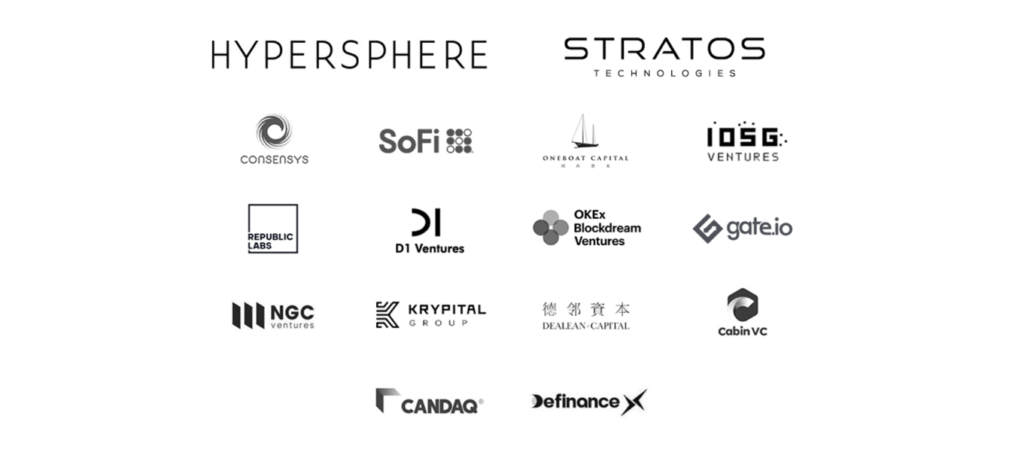
In which, investors participating in 02 rounds are:
Currently, the Subspace Network project is performing backups for all new blocks throughout the Kusama network as a form of community service, contributing to the further development of the ecosystem.
The networks that have been hosted on the Aries Testnet include:
The development plan of the project will include 3 phases of the network:
By consensus mechanism through Proof of Capacity, Subspace empowers users to join the truly decentralized, fairest and environmentally friendly network. In it, people can “vote with their own hard drive”, instead of “vote with CPU/GPU” or “vote with money”, with the current situation of storage devices gradually following reach the majority of users because it is getting cheaper. Thanks to a uniquely designed challenge mechanism, Subspace solves the miners' dilemma by decoupling the consensus and computation processes. In addition, Subspace provides users with a simple way to embed data directly into a scalable decentralized in-memory transaction for blockchain-based applications.
If readers want more information about the Subspace Network project, visit the project's communication channels:
Website | Whitepaper | Twitter | Telegram | Reddit | Discord | Github | Medium | LinkedIn
Ngoài PancakeSwap, hệ sinh thái BNB Chain còn có một AMM khác có TVL đạt 150 triệu USD chỉ sau hai tháng ra mắt, dự án này được gọi là Thena.
Blockade Games provides a platform that allows developers to create blockchain games. In addition, Blockade Games also creates many interesting free games.
UNQ Club is a project that provides a blockchain platform that allows investors to collect and manage existing NFT assets.
BENQI is one of the important pieces of the Avalanche ecosystem. Join TraderH4 to find out what BENQI (QI) is as well as detailed information about the QI token.
In addition to a cryptocurrency storage wallet, SafePal is also known to many investors for its SFP tokens and airdrop events with attractive rewards.
The fever from Akita Inu in the Crypto market in the past time has created a great buzz along with the rapid development of the "dog house token".
What is IoTeX? This is a blockchain built and developed in conjunction with the Internet of Things (IoT). Join TraderH4 to learn this article.
What is OKB? OKB is an exchange coin of OKX and the OKX Chain blockchain. Let's learn about OKX and OKB exchanges with TraderH4 in this article.
DROPP GG brings an innovative and novel idea to provide an NFT mint platform based on geographies outside of the real world.
CronaSwap is a DEX built on Cronos Chain, which has a similar model to Uniswap.
